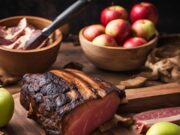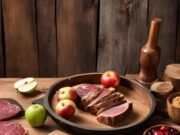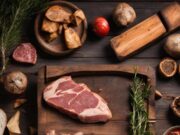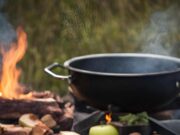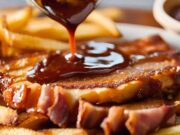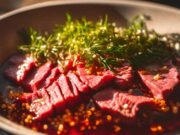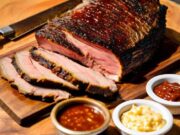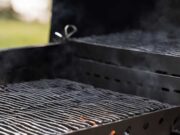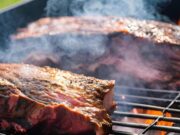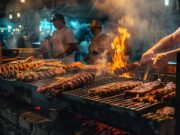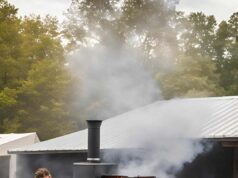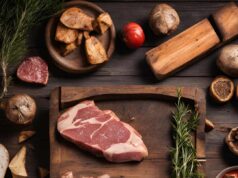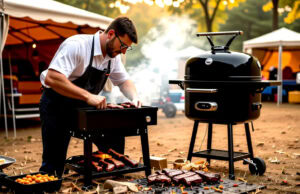Smoking food is a time-honored culinary technique that adds rich flavors to various dishes, but it is important to note that not all smoking methods are equal.
This guide examines the two primary smoking techniques: hot smoking and cold smoking. Each method has its distinct process, advantages, and drawbacks, making it essential for you to understand their differences.
Whether you are an experienced chef or an inquisitive home cook, this information will assist you in determining which smoking method is best suited for your culinary endeavors.
Key Takeaways:
- Hot smoking involves cooking food over heat and smoke, while cold smoking uses smoke to flavor food without heat.
- Hot smoking produces fully cooked food with a smoky flavor, while cold smoking adds a subtle smoky flavor to food without cooking it.
- The decision between hot smoking and cold smoking ultimately depends on personal preference and the specific food being prepared, with factors like flavor, food safety, and cooking time playing a role.
Understanding Hot Smoking
Hot smoking is a cooking method that involves exposing food to smoke at elevated temperatures, typically ranging from 165°F to 250°F. This technique not only infuses the food with a rich smoke flavor but also ensures that it is fully cooked, tender, and safe for consumption.
It is commonly utilized for smoking meats such as brisket and pork, which benefit from the ‘low and slow‘ cooking approach. This method allows flavors to develop thoroughly while also maintaining food safety by preventing bacteria growth.
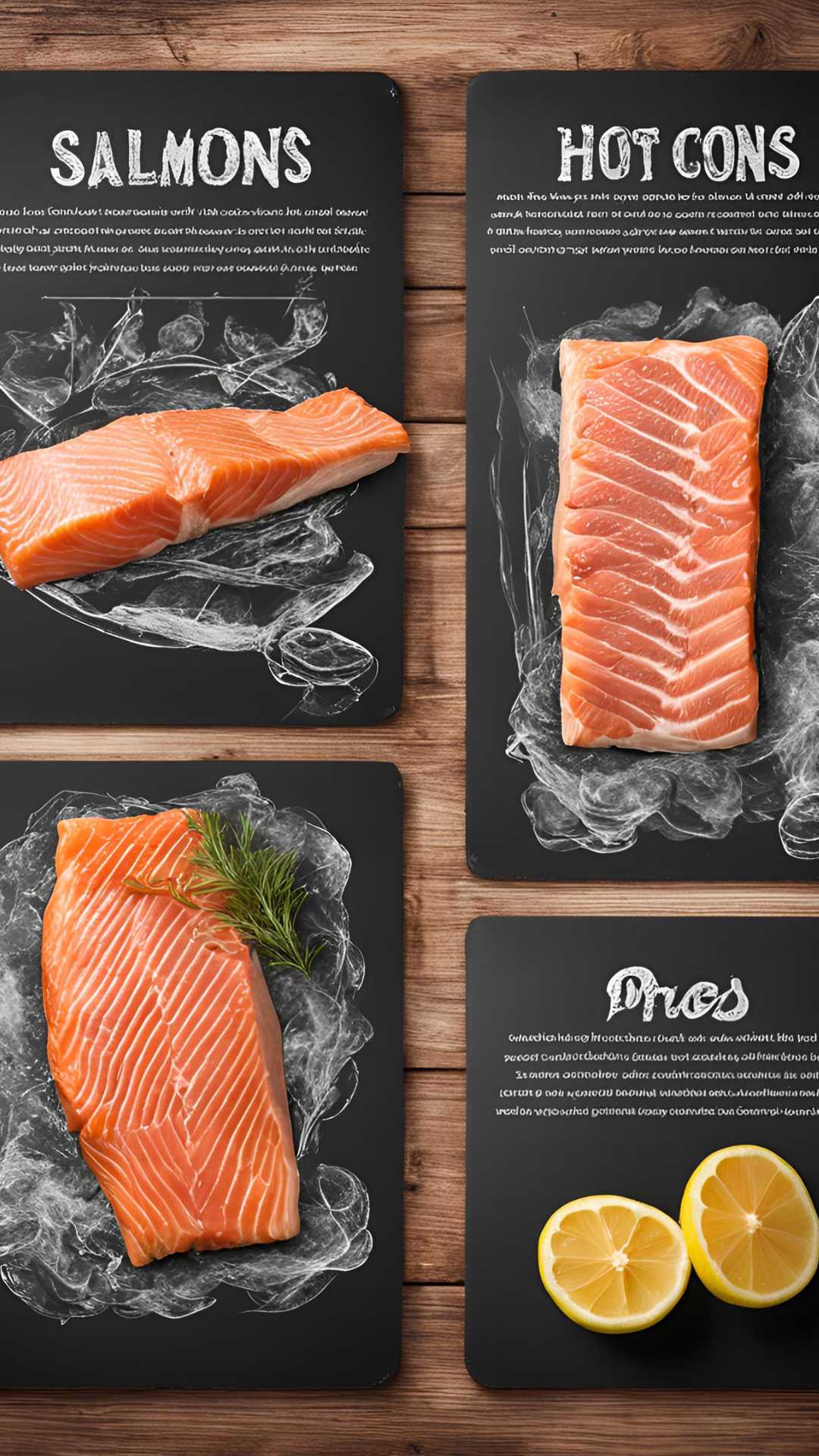
Definition and Process
Hot smoking involves cooking food at high temperatures, typically between 165°F and 250°F, while simultaneously exposing it to smoke for flavor infusion. To achieve this, you will need a smoker or charcoal grill equipped with a smoke generator, allowing the meat to absorb the smoke flavor during cooking.
Proper preparation is essential for achieving the best results. Many individuals opt for brining, which involves soaking the meat in a saltwater solution, often enriched with herbs and spices. This method enhances moisture retention and flavor.
After brining, seasoning the meat with a dry rub or marinade adds an extra layer of taste. It is crucial to monitor the temperature closely, as different meats require specific cooking times. For instance, poultry should reach an internal temperature of 165°F, while larger cuts like pork shoulder benefit from longer exposure, ideally around 200°F to 225°F for several hours.
Maintaining a steady temperature throughout the process is vital for ensuring the meat is not only delicious but also safe to eat, minimizing the risk of foodborne illnesses.
Pros and Cons of Hot Smoking
Hot smoking presents several advantages, including speed and the ability to impart a robust smoke flavor while fully cooking the meat. However, it also has some disadvantages, such as the risk of overcooking or drying out the meat if not monitored closely.
This technique works exceptionally well with a variety of meats, such as chicken, pork, and even fish, allowing you to experiment with diverse flavor profiles. The distinct taste that develops during the smoking process can elevate any dish, making it a favorite among culinary enthusiasts. It is also important to consider safety; while meats are effectively cooked, maintaining proper temperatures is crucial to avoid entering the danger zone where harmful bacteria can thrive.
Examples of popular hot smoked foods include delicacies like:
- Smoked salmon, which showcases a delicate balance of taste.
- Smoked cheeses that add a delightful depth to charcuterie boards.
Choosing to hot smoke can lead to an impressive array of flavors, making it a worthwhile endeavor for anyone passionate about grilling.
Understanding Cold Smoking
Cold smoking is a technique used for flavoring food by exposing it to smoke at lower temperatures, typically below 85°F. This method allows smoke to penetrate the food without cooking it, making it particularly suitable for preserving delicate items such as smoked salmon and certain cheeses.
By employing this process, you can enhance the flavor while maintaining the original texture of the food.
Definition and Process
Cold smoking is a distinctive process that infuses food with smoke flavor while keeping it uncooked, typically at temperatures below 85°F. This technique requires specialized equipment, such as a smokehouse or smoker with precise temperature control, to ensure that the food remains within a safe temperature range during the smoking period.
To achieve optimal results, you will often rely on external smokers equipped with cold smoke adapters that allow smoke to circulate without introducing heat, creating the ideal environment for flavor infusion. Mastering the cold smoking technique demands precision in maintaining low temperatures and an understanding of the types of wood chips or chunks that can enhance the smoke profile.
Woods such as hickory, apple, and mesquite impart distinct flavors to the final product. Each type of wood contributes varying degrees of sweeter, nuttiness, or intensity, allowing you to tailor the smoke flavor to complement different ingredients. By thoughtfully selecting and combining these wood types, you can elevate the overall culinary experience.
Pros and Cons of Cold Smoking
While cold smoking can impart a rich, complex flavor to foods, it also carries certain risks, particularly in terms of food safety due to the potential for bacteria growth if proper precautions are not taken during the smoking process.
This unique method not only preserves but also enhances the taste of various meats, fish, cheeses, and vegetables, making them more delectable and extending their shelf life. By infusing foods with smoke at low temperatures, you can lock in moisture while creating a distinctive, savory profile that many find irresistible.
However, it is crucial to remain vigilant, as extended exposure to the smoking environment can foster harmful bacteria, such as E. coli. To mitigate these dangers, you should ensure that the smoking process is conducted at appropriate temperatures and times, utilizing safe techniques to guarantee both flavor and food safety.
Comparative Analysis: Hot Smoking vs Cold Smoking
When comparing hot smoking and cold smoking, it is essential for you to consider their respective flavor profiles and implications for food safety. Each method produces distinctly different results in terms of taste, texture, and preservation capabilities, which are critical factors to evaluate in your decision-making process.
Flavor Profiles and Food Safety
The flavor profiles achieved through hot smoking and cold smoking differ significantly; hot smoking imparts a robust and intense smoky flavor due to the cooking process, while cold smoking offers a subtler smokiness that allows the original flavor of the ingredient to shine through.
Understanding these distinctions is essential for culinary enthusiasts and chefs, as the chosen method can profoundly influence the overall dining experience. For example, when preparing hot-smoked meats, the heating element enhances flavors and creates a satisfying texture that complements various side dishes. In contrast, cold-smoked fish provides a delicate and nuanced flavor, presenting a sensory experience that highlights the fish’s natural qualities.
Engaging in these smoking techniques requires strict adherence to food safety practices. Proper temperature management and timing are crucial to preventing foodborne illnesses, ensuring that both flavor and safety coexist harmoniously in every bite.
Which Method is Right for You?
Choosing the appropriate smoking method relies on several factors, including your personal taste preferences, the type of food you are preparing, and important considerations related to food safety.
Each method, whether hot or cold smoking, presents unique advantages and potential risks that should guide your decision-making process.
Factors to Consider in Your Decision
When deciding between hot smoking and cold smoking, you should consider several factors, including the type of equipment available, the specific food being smoked, and your desired flavor intensity and food safety requirements.
Choosing the right smoking method often depends on the equipment at your disposal, whether it’s a specialized smoker or a traditional grill, as each option offers different capabilities and levels of temperature control. For example, foods like salmon or brisket benefit significantly from hot smoking, which not only enhances flavor but also thoroughly cooks the meat, reducing harmful bacteria in the process.
On the other hand, cold smoking is typically better suited for items such as cheese or cured meats, as it allows for the development of delicate flavors without cooking the food. Personal preferences also play an essential role; some may gravitate toward the robust smokiness associated with hot smoking, while others might prefer the subtle nuances provided by cold smoking techniques.
By balancing these elements, you can ensure a satisfying smoking experience tailored to your preferences and needs.
Frequently Asked Questions
What is the main difference between cold smoking and hot smoking?
The main difference between cold smoking and hot smoking is the temperature at which the food is smoked. Cold smoking is done at temperatures between 68-86°F, while hot smoking is done at temperatures between 126-176°F.
What are the pros of cold smoking?
Cold smoking allows for a longer smoking time, resulting in a deeper and more complex flavor. It is also a safer method for preserving food, as the low temperature prevents bacteria growth.
What are the cons of cold smoking?
Cold smoking requires specialized equipment and careful monitoring to maintain the correct temperature. It also takes much longer than hot smoking, which may not be ideal for those looking for a quicker smoking process.
What are the pros of hot smoking?
Hot smoking is a quicker method compared to cold smoking, making it more convenient for those with time constraints. It also gives food a cooked texture, making it ready to eat immediately after smoking.
What are the cons of hot smoking?
Hot smoking can be a riskier method for preserving food, as the higher temperatures may not kill all bacteria. It also results in a shorter smoking time, resulting in a less intense flavor compared to cold smoking.
Which method is better for preserving food?
Cold smoking is generally considered the better method for preserving food, as the low temperature kills bacteria while still retaining the natural texture and flavor of the food. However, hot smoking can also be effective as long as proper food safety measures are followed.
Which method is right for me?
The method you choose depends on your personal preference and the type of food you are smoking. If you have the time and equipment, cold smoking may result in a more complex flavor. But if you prefer a cooked texture and don’t have as much time, hot smoking may be a better option for you.



